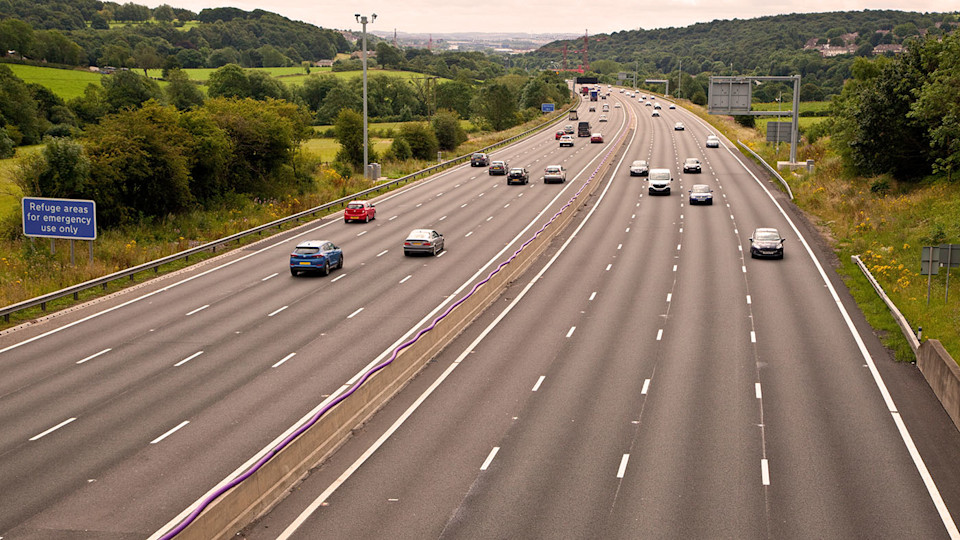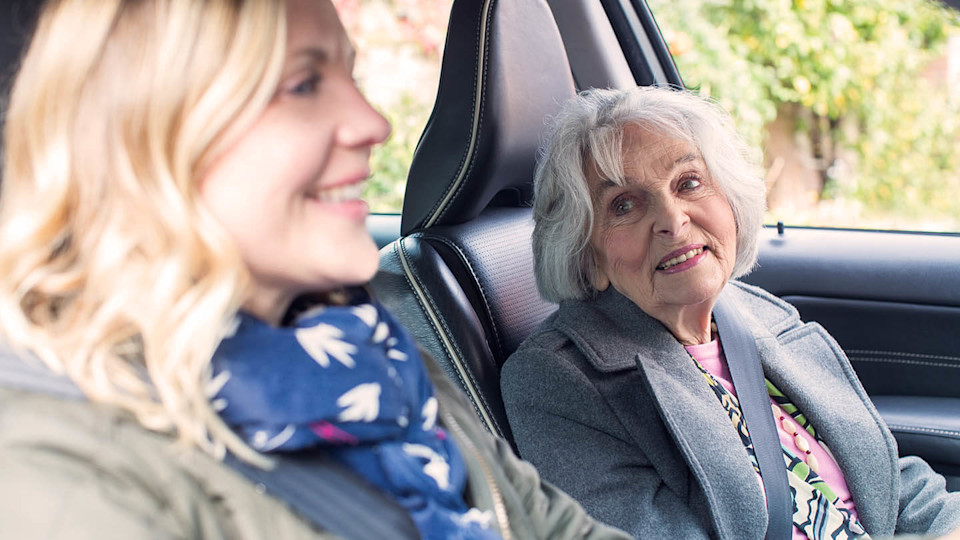
Personal injury
Are Smart Motorways Dangerous?
Are smart motorways a danger to our roads, or do they provide more safety to drivers? With the expansion of new smart motorways being paused, but roads already under construction still being converted, we explore this topic.
The main concern amongst the public and motoring groups when asking ‘are smart motorways safe?’ is that without a hard shoulder, there’s a greater chance of a vehicle breaking down in a live lane and being involved in a collision with a moving vehicle. Another cause for concern is that some motorists may not know how to use them effectively.
We explore the data collected so far from the stocktake, outline how to drive on a smart motorway and what to do if you breakdown on a smart motorway, and look at what the Government is planning to do to improve safety. This includes the roll out of new technology to detect stopped vehicles, which is due to be completed by the end of September 2022.
What are smart motorways?
A smart motorway is a section of motorway that uses traffic management methods to increase capacity and reduce congestion in particularly busy areas.
These methods include using the hard shoulder as a running lane and using variable speed limits to control the flow of traffic.
There are currently three different types of smart motorway in the UK:
- Controlled motorways: where the hard shoulder remains but they apply technology to a conventional motorway to control the speed of traffic with variable and mandatory speed limits. Overhead electronic signs display messages to drivers, such as warning of an incident ahead.
- Dynamic hard shoulder running (DHS) motorways: they apply the controlled motorway technology and temporarily increase capacity by utilising the hard shoulder and feature emergency areas (EAs). The hard shoulder is sometimes used as a live running lane, with electronic signs and signals to guide drivers when it's safe to use for live running.
- All lane running (ALR) motorways: they apply the controlled motorway technology, permanently convert the hard shoulder as a running lane and feature EAs.
Smart motorways deaths and smart motorway accident statistics
In 2018, 15% of all motorway accidents were smart motorway accidents, and in 2019 a total of 17% of accidents happened on a smart motorway.
According to the National Highways stocktake report, in 2018 ALR and DHS motorways accounted for 13.8% of all motorway traffic and 12.8% of fatalities, which suggests that the share of fatalities occurring on these motorways was lower than the share of traffic carried.
In 2019, there were 15 (1%) fatalities on ALR and DHS motorways, compared to 70 (5%) on motorways with a permanent hard shoulder - a rise of four since 2018, reflecting in part an increase of 2.1% on the motorway traffic.
The 2020 stocktake also found that for the first nine ALR schemes implemented by the Government, the casualty rate across all motorway types improved significantly by 18%.
The report concluded that, overall, smart motorways are in most ways as safe as, or safer than, conventional motorways.
Although statistically you’re less likely to have an accident with another moving vehicle on a smart motorway than a conventional motorway, the risk of a live lane collision between moving vehicles and a stopped vehicle is greater. Highways England figures from 2019 show that 40% of breakdowns on ALR motorways across the previous two years happened in live lanes.
Despite breaking down in a live lane being a concern for some drivers, the report examined how many fatal casualties had occurred in a live lane between 2015 and 2019 and found that most live lane breakdowns don’t lead to fatal or serious casualties. It found that conventional motorways had 341 fatalities, DHS had 12 and ALR had 24.
National Highways recently published their second year progress report which shows that between 2016 and 2020, there were 243,701 live lane breakdown incidents and slightly more than half of these took place on conventional motorways. A quarter of accidents were on motorways without a permanent hard shoulder (ALR and DHS). They observed that live lane breakdowns on ALR and DHS motorways are identified more than other road types, which makes direct comparisons prone to bias.
The data so far suggests that where smart motorways are present accident figures are lower, but more data is needed to confirm whether smart motorways are effective. The five years’ worth of data on drivers’ safety, which will be collected by the Department for Transport, will help to confirm this.
How smart motorways work
On motorways where the hard shoulder has been converted to a live traffic lane, there are a whole range of inter-related features working together to help keep the traffic moving safely:
- Variable speed limits are enforced to keep traffic moving so that journeys can potentially be quicker and there isn't the frustration of stopping and starting your car.
- Clearly signed, orange coloured EAs set back from the road with the telephones on them linking directly to Highways England control rooms.
- Detection systems to monitor traffic for changes in flows.
- CCTV cameras the operators are able to move and zoom giving visibility of 100% of the carriageway and are used to monitor or manage congestion and incidents where notified.
- Signs and signals that provide improved information to drivers to alert them to hazards ahead and display X signs to close lanes to other traffic when a stopped vehicle is identified.
- Enforcement cameras to deter the minority who break speed limits and ignore read X signs.
What to do if you breakdown on a smart motorway
With the hard shoulder on smart motorways becoming another lane to ease traffic flow, you might be unsure of what to do or how to use a smart motorway in the event of a breakdown.
What’s unknown to many motorists, including those on the road regularly, such as truck drivers and taxi drivers, is that there are laybys available called Emergency Areas (EAs).
These are positioned every 1.2 miles on all lane running motorways, which is around every 70 seconds at 60 miles per hour, marked with large blue signs, and feature an orange SOS telephone to be used in the event of an emergency.
Here’s a step by step of what you should do if you breakdown on a smart motorway:
- Follow the orange SOS signs to an emergency area.
- Once you reach an EA, you should ensure your hazard lights are on, exit the vehicle through the passenger door (if possible), and then stand behind the crash barrier to ensure a safe distance from motorway traffic.
- Use the SOS telephone to inform and gain further instructions from National Highways; or if you’re unable to do so, contact them via a mobile device on 0300 123 5000.
- If you or anyone else is injured, you should also contact emergency services.
- Contact your breakdown service to come to your aid.
- If your vehicle has been repaired, you should contact National Highways again via the SOS phone to let them know you’re leaving. They’ll mark the nearside lane with a red X, closing the lane and allowing you to safely re-join the motorway.
If you can’t get off the motorway or to an emergency area:
- Head to the nearside lane and move onto the verge, ensuring that your hazard lights are on.
- Exit your vehicle through the passenger door and wait behind the safety barrier where there is one, keeping well away from moving traffic. Once the authorities are aware of your stranded vehicle, they’ll close the lane.
- If you can, you should let National Highways know about your situation by using a roadsid1e emergency telephone or mobile device.
- If you’re unable to exit your vehicle and get to a safe place, have stopped in a live traffic lane or feel your life is in danger, you should remain in your vehicle with your seatbelt on, turn on your hazard warning lights and contact 999 immediately.
What’s coming up next from the Government for smart motorways?
Smart motorways have been introduced on the busiest sections of England's motorway network; however, the Department for Transport has announced that it’s pausing the roll out of new all lane running motorways until there’s five years’ worth of data on drivers’ safety.
Despite this pause, they’re still continuing to work on any roads already under construction and ensuring all existing smart motorways without a permanent hard shoulder are made as safe as they can possibly be. This includes the M1, the M4 and the M6.
Radar-based stopped vehicle detection technology (SVD) is being rolled out. The SVD system is designed to detect single stationary vehicles in low flow, for example at night, and enables National Highways to detect stopped vehicles, typically within 20 seconds. This means that lanes with stranded vehicles will be closed off much quickly. This is due to be rolled out on all ALR motorways by September 2022.
National Highways is also investing £390 million to create more emergency areas on existing smart motorways (50% more than at present), as well as having invested £5 million to increase awareness about how smart motorways work and how to use them safely and effectively.
Once the Government has five years’ worth of driver safety and economic data, they’ll assess the data to make an informed decision on the future of smart motorways.
You can find more information about this on the National Highways 'Driving on Motorways' information hub.
When to seek advice
If you’ve been injured in a road traffic accident, our expert team of personal injury lawyers is here to help. Having supported clients for decades with their personal injury claims, we understand how life-changing the experience can be; both for you and your family. That’s why we’ll assist you not only in seeking financial compensation, but also specialist treatment and support.
Simply get in touch on 0330 041 5869, or, if you prefer, you can contact us via our online form or web chat.




We understand how life-changing road traffic collisions can be for both you and your loved ones. Brake is a UK charity that campaigns to stop road deaths and injuries, as well as supporting those who’ve unfortunately been affected by road crashes. Read more about our partnership with Brake.